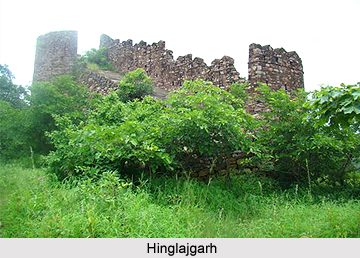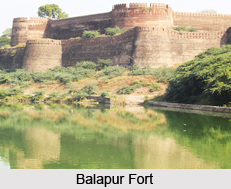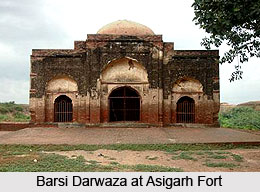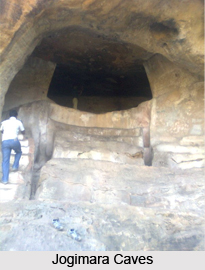 Hinglajgarh, also known as Hinglaj Qila or Fort, is an ancient Indian fort. It is located in Bhanpura tehsil in Mandsaur district in Madhya Pradesh. The geographical coordinates are 25 degree 30` N latitude and 65 degree 31` E longitude. Hinglajgarh Fort is situated around 26 km away from the town of Bhanpura and almost 165 km from Mandsaur town in the state of Madhya Pradesh. Sculptures from Gupta Empire to the Parmara Dynasty are found inside the fort. It was considered as one of the most popular centres of craftsmanship for almost eight hundred years. Some of the earliest statues discovered date back to 4th and 5th century AD.
Hinglajgarh, also known as Hinglaj Qila or Fort, is an ancient Indian fort. It is located in Bhanpura tehsil in Mandsaur district in Madhya Pradesh. The geographical coordinates are 25 degree 30` N latitude and 65 degree 31` E longitude. Hinglajgarh Fort is situated around 26 km away from the town of Bhanpura and almost 165 km from Mandsaur town in the state of Madhya Pradesh. Sculptures from Gupta Empire to the Parmara Dynasty are found inside the fort. It was considered as one of the most popular centres of craftsmanship for almost eight hundred years. Some of the earliest statues discovered date back to 4th and 5th century AD.
History of Hinglajgarh
The name of the Hinglajgarh Fort is derived from Goddess Hinglaj Devi, who was the Kuladevi or family deity of the Kshatriyas. A temple devoted to the goddess, commissioned by the Mauri rulers, is also present in the premises of the fort. Originally the region was known as Hinglaj Tekri. However after the Mauri kings founded the fort, the territory came to be known as Hinglajgarh.
During the rule of the Parmaras, the Hinglajgarh Fort was further fortified making it safe and sound in the face of impending danger. The territory was occupied by King Halu from the Hada dynasty (a branch of the Chauhan clan) in 1281. Later the fort was seized by Chandrawat rulers. In 1773, Hinglajgarh was captured by Queen Ahilya Bai of the Holkar dynasty after she defeated King Laxman Singh Chandrawat. During her reign the fort and the temple Of Goddess Hinglaj (Hinglaj Mata Temple) were renovated. Moreover, some other temples in the vicinity, including a temple of Lord Rama and temple of Lord Shiva, were restored. The fort at Hinglajgarh was primarily utilised as a shelter for the rulers and was never considered a permanent capital, even though it was occupied by several royal dynasties.
Architecture of Hinglajgarh
Hinglajgarh or Hinglaj Qila consists of four entrances or gates (Pol), namely Mandaleshwaripol, Katrapol, Surajpol and Patanpol. The three entrances of Patanpol, Surajpol and Katrapol are faced towards the east side; where as the Mandaleshwaripol is faced towards the west. The fort also includes a tank for storing water known as Surajkund.
Several temples are located in Hinglaj Fort. The Hinglaj Mata temple is situated towards the south. The Rani Mahal, Darbar Kaksha, Shiva Temple and Rama Hanuman Temple are also located towards the south of the fort. Hinglajgarh also includes 2 towers known as Tirtham. These towers were primarily used for communicating with other forts in distant areas by sending signals through light.




